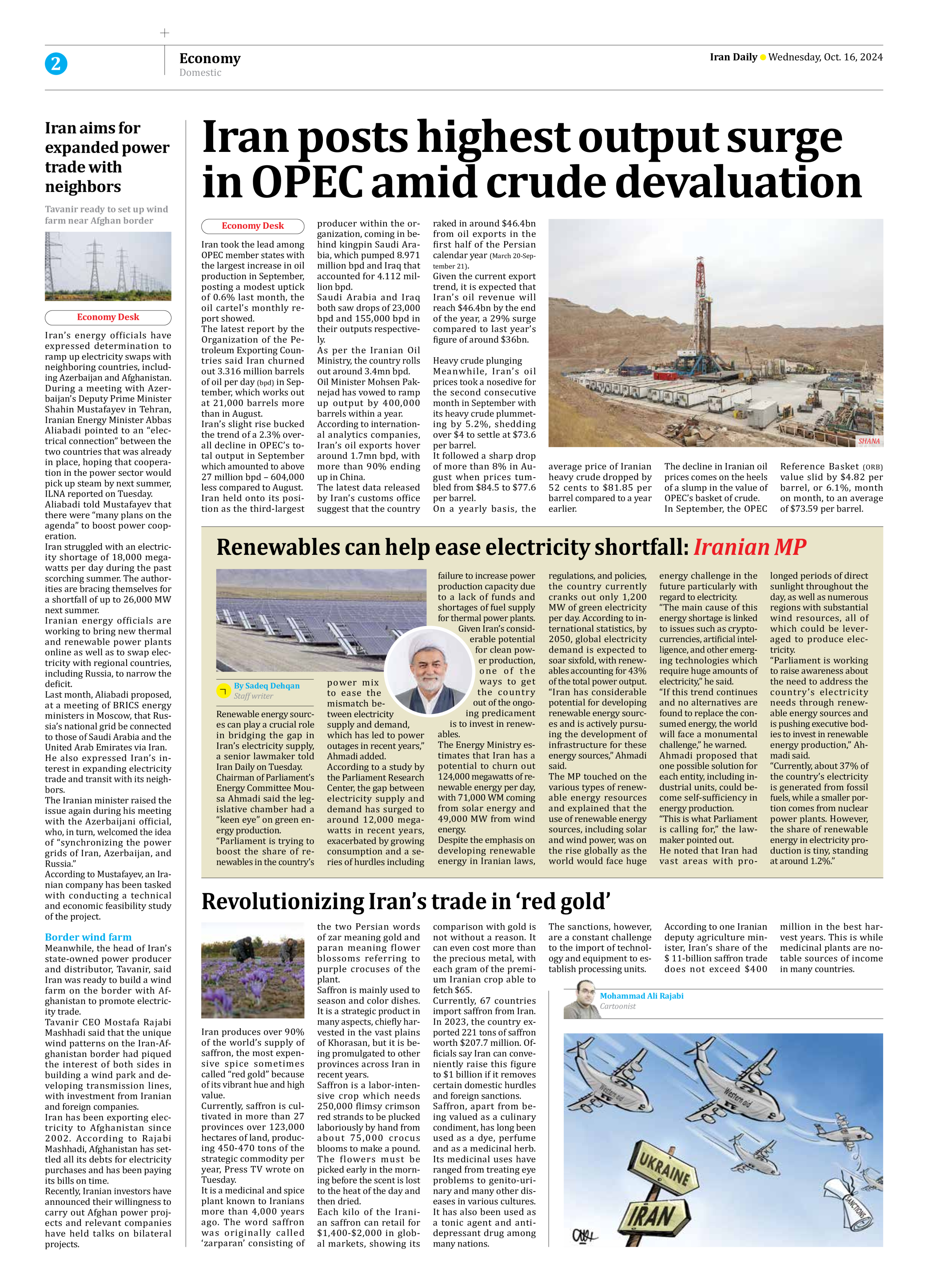
Renewables can help ease electricity shortfall: Iranian MP
Renewable energy sources can play a crucial role in bridging the gap in Iran’s electricity supply, a senior lawmaker told Iran Daily on Tuesday.
Chairman of Parliament’s Energy Committee Mousa Ahmadi said the legislative chamber had a “keen eye” on green energy production.
“Parliament is trying to boost the share of renewables in the country’s power mix to ease the mismatch between electricity supply and demand, which has led to power outages in recent years,” Ahmadi added.
According to a study by the Parliament Research Center, the gap between electricity supply and demand has surged to around 12,000 megawatts in recent years, exacerbated by growing consumption and a series of hurdles including failure to increase power production capacity due to a lack of funds and shortages of fuel supply for thermal power plants.
Given Iran’s considerable potential for clean power production, one of the ways to get the country out of the ongoing predicament is to invest in renewables.
The Energy Ministry estimates that Iran has a potential to churn out 124,000 megawatts of renewable energy per day, with 71,000 WM coming from solar energy and 49,000 MW from wind energy.
Despite the emphasis on developing renewable energy in Iranian laws, regulations, and policies, the country currently cranks out only 1,200 MW of green electricity per day. According to international statistics, by 2050, global electricity demand is expected to soar sixfold, with renewables accounting for 43% of the total power output.
“Iran has considerable potential for developing renewable energy sources and is actively pursuing the development of infrastructure for these energy sources,” Ahmadi said.
The MP touched on the various types of renewable energy resources and explained that the use of renewable energy sources, including solar and wind power, was on the rise globally as the world would face huge energy challenge in the future particularly with regard to electricity.
“The main cause of this energy shortage is linked to issues such as cryptocurrencies, artificial intelligence, and other emerging technologies which require huge amounts of electricity,” he said.
“If this trend continues and no alternatives are found to replace the consumed energy, the world will face a monumental challenge,” he warned.
Ahmadi proposed that one possible solution for each entity, including industrial units, could become self-sufficiency in energy production.
“This is what Parliament is calling for,” the lawmaker pointed out.
He noted that Iran had vast areas with prolonged periods of direct sunlight throughout the day, as well as numerous regions with substantial wind resources, all of which could be leveraged to produce electricity.
“Parliament is working to raise awareness about the need to address the country’s electricity needs through renewable energy sources and is pushing executive bodies to invest in renewable energy production,” Ahmadi said.
“Currently, about 37% of the country’s electricity is generated from fossil fuels, while a smaller portion comes from nuclear power plants. However, the share of renewable energy in electricity production is tiny, standing at around 1.2%.”







